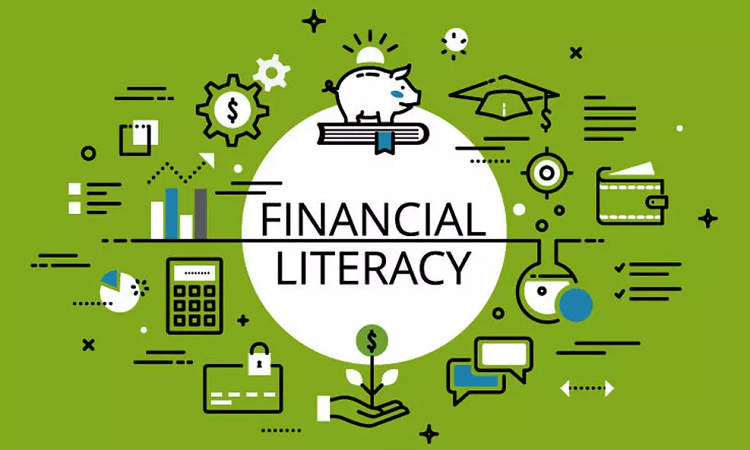What Are Your Options for Funding Your Own Retirement?

Does the thought of retirement scare you more than excite you? It might be because you’re not financially prepared for it.
It’s something that almost half of all adults between 55 and 66 aren’t even close to being prepared for.
About 50% of women and 47% of men in this age group don’t have personal savings for retirement.
With millions of workers quitting their jobs and starting businesses, funding your own retirement becomes even more important.
If you’re hoping that Social Security will be enough to take care of you when you retire, think again. The most you’ll get each month is about $3,300 a month.
You need to have retirement funds set aside to be able to enjoy your retirement. Otherwise, financial stress will follow.
Don’t worry, because we’ve got your back. Read this guide that shows you how to fund your retirement.
-
Your Retirement Number
We’re so accustomed to thinking about and dealing with the here and now that it’s unfathomable to think of life in retirement.
You’ll need to think about when you want to retire and what you want your life to look like.
What kind of home will you have? What type of car will you drive? Will you travel a lot in retirement?
Think about these things and your daily expenses. Add up those current costs and figure out how much you need each year to live comfortably.
Don’t forget to add inflation to your calculations. The average inflation rate is about 3% a year.
There are retirement savings guidelines that financial planners use. Some suggest that you should have about 90% of your annual income. Others say that you should have $2 million set aside.
These numbers aren’t meant to discourage you. Use them as a guideline. You can look at your situation and come up with your own numbers.
-
Your Current Budget
It’s getting harder and harder to be able to save money each month. Between student loans, stagnant incomes, and runaway inflation, it might feel impossible to save.
The easiest way to save is to not see the money in your bank account to begin with.
This is playing off of Parkinson’s Law. The law was originally applied to productivity. It says that if you give yourself five hours to complete a project, it will take five hours.
That gets applied to your finances, too. If the money is available, your expenses will rise to meet your income.
Likewise, if your expenses go up slightly, your income will rise to match it.
Take a look at your budget and look at your income. Ideally, you want to set aside 10% to 20% of your net income for retirement.
How much depends on how aggressive your retirement plan is and your age.
Set up a savings account just for retirement funds. Set up an automatic transfer to that a certain percentage goes into the savings account every time you get paid.,
You don’t see the funds, and your income and expenses will adjust accordingly.
-
Pick Your Retirement Vehicles
Where will you put that money? There are a few factors that come into play. How much can you save each month, your age, aversion to risk, and how much you need to retire are the main factors.
The typical retirement fund is an IRA. You can contribute up to $6,000 a year if you’re younger than 50, and $7,000 if you’re over 50.
A traditional IRA means that you can deduct your contributions from your taxes. You’ll get taxed on the withdrawals as income.
That’s not the case with a Roth IRA. You don’t get the tax deduction now. You get the withdrawals tax-free upon turning 59 and a half years old.
Are you self-employed? There are other options available, such as a SIMPLE IRA and Individual 401(k).
Stocks, bonds, mutual funds, and real estate investment trusts are other ways to invest in your retirement.
Real estate tends to be a very stable and steady investment. Stocks are volatile and come with a lot of risks. However, they may have higher returns.
Looking for other investment options beyond stocks and IRAs? Consider investing in alternatives. Technology makes these investments easier to make.
Alternative investments don’t have the crazy ups and downs that stocks do.
-
Diversify Your Assets
Once you get started with one investment vehicle, you may want to diversify them. That’s because you can maximize your savings and protect yourself if there’s a market correction.
For instance, if you put everything into a self-funded 401(k) and the market tanks, you have other investments that stay steady.
The blow from the market correction isn’t as damaging as it could be.
-
Lock Your Retirement Funds
It’s hard to know that you have retirement funds available during an emergency. You might want to withdraw some of those funds to pay for an emergency.
That’s an easy step to take, but it’s not a wise one. That’s less money for your retirement and you may get taxed for early withdrawal.
Work with a financial professional to guide you through the pros and cons of withdrawing funds before retirement.
They may have other options to get the cash you need at that moment.
Steps for Funding Your Own Retirement
What does it take to fund your own retirement? It takes a couple of big steps at first, but once you understand what you need, it does get much easier.
You’ll want to start funding your retirement by looking at what you really need to retire. Decide how much you can set aside and set up your retirement funds.
Once you get started, you won’t want to stop until it’s time to enjoy your retirement.
If you enjoyed learning about funding your own retirement, you’ll enjoy the other articles on the blog. Check them out today.





